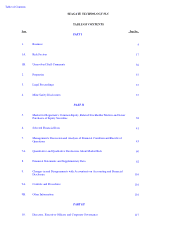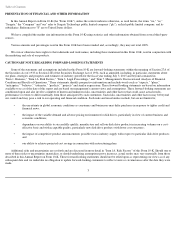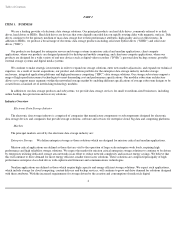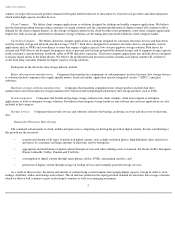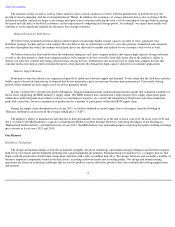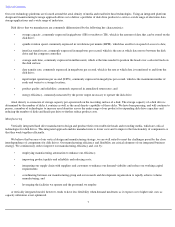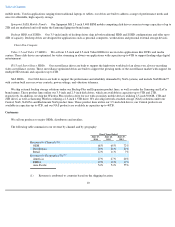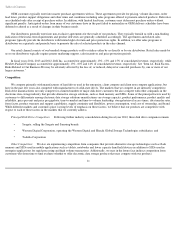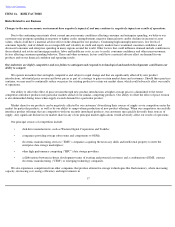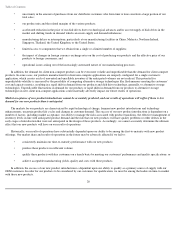Seagate 2013 Annual Report Download - page 14
Download and view the complete annual report
Please find page 14 of the 2013 Seagate annual report below. You can navigate through the pages in the report by either clicking on the pages listed below, or by using the keyword search tool below to find specific information within the annual report.
Table of Contents
OEM customers typically enter into master purchase agreements with us. These agreements provide for pricing, volume discounts, order
lead times, product support obligations and other terms and conditions including sales programs offered to promote selected products. Deliveries
are scheduled only after receipt of purchase orders. In addition, with limited lead-time, customers may defer most purchase orders without
significant penalty. Anticipated orders from many of our customers have in the past failed to materialize or OEM delivery schedules have been
deferred or altered as a result of changes in their business needs.
Our distributors generally enter into non-exclusive agreements for the resale of our products. They typically furnish us with a non-binding
indication of their near-term requirements and product deliveries are generally scheduled accordingly. The agreements and related sales
programs typically provide the distributors with limited right of return and price protection rights. In addition, we offer sales programs to
distributors on a quarterly and periodic basis to promote the sale of selected products in the sales channel.
Our retail channel consists of our branded storage products sold to retailers either by us directly or by our distributors. Retail sales made by
us or our distributors typically require greater marketing support, sales incentives and price protection periods.
In fiscal years 2014, 2013 and 2012, Dell Inc. accounted for approximately 13%, 13% and 15% of consolidated revenue, respectively, while
Hewlett-Packard Company accounted for approximately 13%, 10% and 14% of consolidated revenue, respectively. See "Item 1A. Risk Factors-
Risks Related to Our Business-We may be adversely affected by the loss of, or reduced, delayed or canceled purchases by, one or more of our
larger customers."
Competition
We compete primarily with manufacturers of hard drives used in the enterprise, client compute and client non-compute applications, but
have in the past few years also competed with manufacturers of solid-state drives. The markets that we compete in are intensely competitive.
Disk drive manufacturers not only compete for a limited number of major disk drive customers but also compete with other companies in the
electronic data storage industry that provide alternative storage solutions, such as flash memory and SSDs. Some of the principal factors used by
customers to differentiate among electronic data storage solutions manufacturers are storage capacity, product performance, product quality and
reliability, price per unit and price per gigabyte, time-to-market and time-to-
volume leadership, storage/retrieval access times, data transfer rates,
form factor, product warranty and support capabilities, supply continuity and flexibility, power consumption, total cost of ownership, and brand.
While different markets and customers place varying levels of emphasis on these factors, we believe that our products are competitive with
respect to each of these factors in the markets that we currently address.
Principal Disk Drive Competitors. Following further industry consolidation during fiscal year 2012, three disk drive companies remain:
• Seagate, selling the Seagate and Samsung brands;
• Western Digital Corporation, operating the Western Digital and Hitachi Global Storage Technologies subsidiaries; and
• Toshiba Corporation
Other Competitors. We also are experiencing competition from companies that provide alternative storage technologies such as flash
memory and SSDs used in mobile applications such as tablets, notebooks and lower capacity hand held devices in addition to SSDs used in
enterprise applications for rapid processing and high volume transactions. Additionally, we may in the future face indirect competition from
customers who from time to time evaluate whether to offer electronic data storage products that may compete with our products.
11


